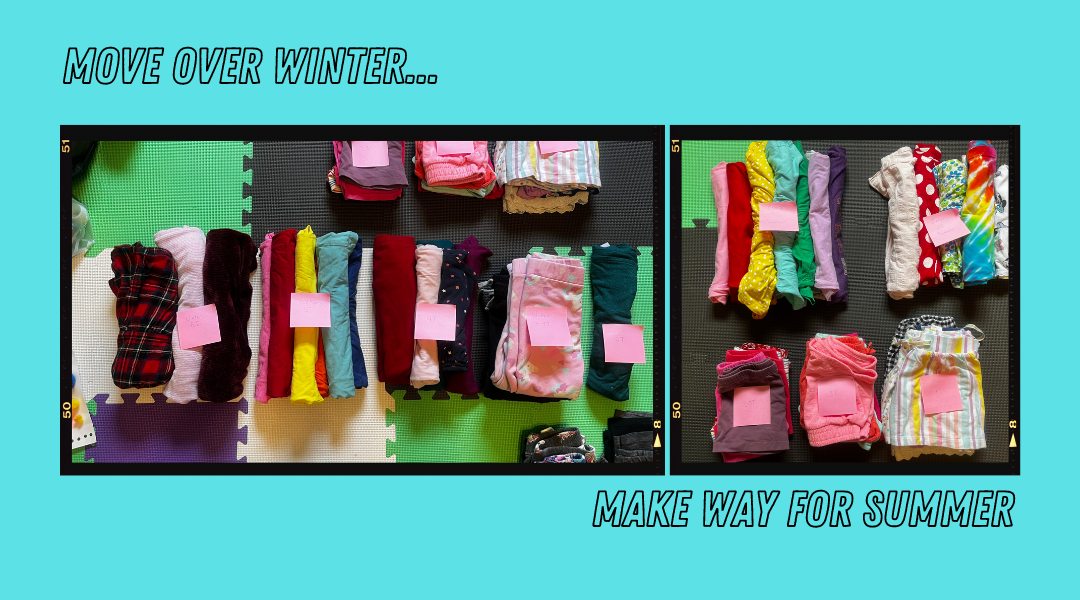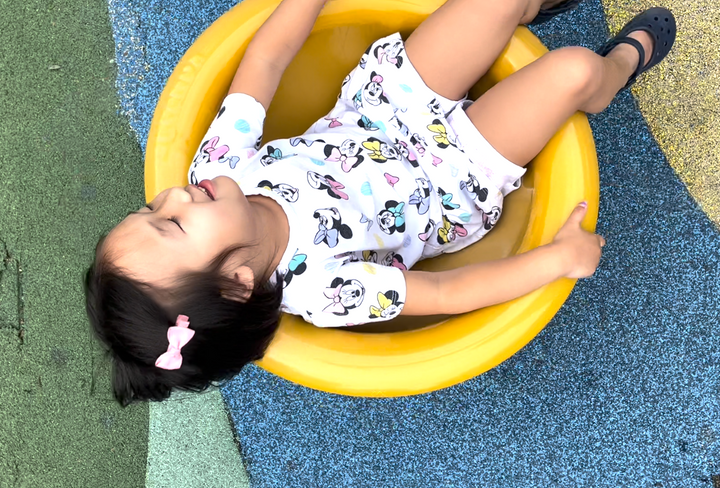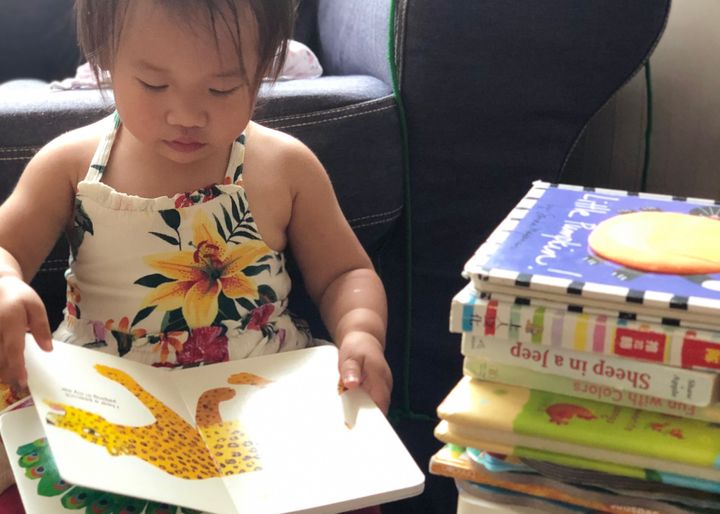Organizing Your Kids' Clothes: Sort, Store, and Declutter
Organizing your kids' clothes can be a daunting task, but with these tips, you can simplify the process. Sort through clothes, store off-season items, and restock your kids' wardrobes without breaking a sweat.

As we bid farewell to the unpredictable weather of spring, those of us fortunate enough to live in a place that experiences all four seasons can finally embrace the transition from cozy sweaters to breezy shorts and dresses. However, for parents with children, this time of year comes with an added challenge: sorting through your kids' clothes, figuring out what still fits, what needs to go, and what to store for next year. But fear not, while the task may seem daunting, there are ways to make it a little less painful. Let's dive in and explore some tips and tricks to help simplify the process.
This article contains affiliate links to products I feel good about endorsing, meaning I may earn commission from qualifying purchases. Check disclaimers for more info.
Step 1: Take Inventory of the Situation
Still randomly coming across size 6 month socks at the bottom of the dresser drawer, but your youngest is already five? It happens, but this first step will help. Go full Marie Kondo on your kids' closets and dressers and pile everything up into the middle of the room. Then, you can quickly sort what you have into three piles: recycling, donate/sell, or store for next year. Have more than one child? Tackle each child's clothing separately to ensure sizes are consistent.

Don’t forget off-season gear! As summer approaches, pack away the winter coats, snow bibs, and boots, and dust off the swimsuits, sun hats, and sandals. Check to see what still fits and what needs to be replaced. By taking the time to review now, you won't be scrambling last minute to purchase any items the day you want to hit the beach.
Keeping up with outgrown clothes: With kids, you never know when they're going to hit a growth spurt. It can be frustrating to find a piece of clothing that your child has outgrown but somehow managed to sneak its way back into the back of the closet or bottom of the drawer. To stay on top of this throughout the year keep a special bin for outgrown clothing for each child. You can use small storage cubes in a guest room or any other out of the way place. This way, you can easily toss in clothes when they don't fit anymore and keep them organized until you decide what to do with them. By doing this, you'll avoid constantly cycling outgrown clothes back into your kids' active wardrobe, saving yourself the hassle of searching for clothes that no longer fit and making room for the items that do.
Make it a Family Affair or Not: You can let your kids help with the sorting so they learn to be responsible for their own clothes. Of course, as with all teachable moments, what would probably take you half an hour on your own will probably take three hours with their "help." Plus, if yours are anything like mine, they'll insist on keeping their old shirts until they've become crop tops or pants until they are cutting off circulation, so absolutely nothing will make it into the donate pile. To avoid some of this struggle I find it best to do this transition without their input, but if you're looking for something to do on a rainy weekend, enjoy turning it into a family activity.
Step 2: Storing for Off-Season
While we often find that our children outgrow their clothes by the next year, we still keep items that are in good shape in storage just in case. At the beginning of each cycle, we reassess what we have and move anything that no longer fits to the outgrown clothing bins. It's helpful to donate seasonal clothes at the start of the season to ensure that other families can get the most use out of them.

Keeping it organized: It may be tempting to just throw everything into one bag and not look at it again until next winter, but to avoid the hassle of re-sorting everything again, take the time to store your off-season clothes in an organized manner. Start by separating the clothes by type and size, and consider labeling it to indicate the size at a glance–I just place a sticky note on top of the pile. This way, you'll be able to locate the items you need more easily and quickly to hand down or donate. We like these transparent under-bed storage bags that can collapse completely flat when not in use. These bags provide great protection and keep everything tucked away until the next season rolls around. Plus, you can easily see what's inside without having to sift through everything.
Step 3: Restock the closets
If you followed the strategies above during last summer, it should be pretty easy to identify what will still work this year and restock your kids' wardrobes. While you're doing this, you'll likely identify right away the clothes that no longer fit and can go straight into the outgrown clothing bins. You might also notice that you're missing certain items, and can start creating a list of what needs to be filled in.
Buying new clothes every season can quickly add up and become an unnecessary expense for something you know will only be good for a few months. Here are a few strategies to reduce that clothing budget.
Shop a sibling's closet first. If a younger sibling can fit into an outgrown item, that’s less effort and money you have to spend on new clothes. Plus, it’s fun to see something an older sibling wore getting a second life. Not to mention, the kids who hate to part with things are sometimes more willing to pass them along when they know it is staying in the family.

Trash to Treasure. Another great way to save money and reduce waste is by searching your local community groups on Facebook, such as "Buy Nothing" and "Trash to Treasure." These groups provide a platform for people to give away gently used items that they no longer need, and others can find a new home for these items. It's a great way to find free clothing for your children and to also list any items that your kids have outgrown and want to donate. Not only is this better for the environment, but it's also a great way to build a sense of community by paying it forward.
Bargain Hunting. If you've done the above and still find you're missing an essential or two, then it's time to shop! Hit the bargain racks at your favorite stores or if you're an online shopper like me, go straight to that sale and clearance section to get value for your money. Don't forget to check for coupon codes and promo deals before you hit submit order!
Step 4: Kick it to the Curb
Now it's time to deal with the other pile of clothes - the ones that are too damaged to be donated or reused. These garments can be recycled, keeping them out of landfills and reducing their environmental impact. Textile recycling is an eco-friendly option that repurposes the fabric, turning it into new products like insulation, rags, or even new clothing. Earth911's recycling locator can help you find a collection point near you. By recycling your unwanted clothes, you'll help to reduce the staggering amount of textile waste that ends up in landfills each year.
Did you know? The US generates over 17 million tons of textile MSW (Municipal Solid Waste) annually, with 66% of all unwanted clothes and textiles ending up in landfills. You can be a part of the solution.
That's it! These tips should help make the transition of your kids' clothes between seasons a bit easier and hopefully save you some time and money along the way. And who knows, with all the extra time and money saved, maybe you've earned a well-deserved wardrobe upgrade for yourself? Don't forget to take a moment to appreciate the hard work you've put in and take care of yourself too!




Comments ()